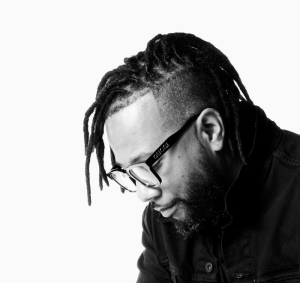January 5, 2024
By Michael Walker, Global Executive Editor, Bloomberg Media Studios
Bloomberg Media Studios started the New Creativity Speaker Series to connect with creators doing remarkable work across all mediums and to share new thinking and best practices from leaders in their fields. In this latest article, we look at the future of advertising with Walt Geer, Chief Experience Design Officer at VML Health.
 Walt Geer
Walt Geer
If you like watching videos online, you probably owe Walt Geer countless minutes of your life.
Working on the front lines of both advertising and technology for nearly a quarter of a century, Walt has shown a knack for creating innovative advertising solutions, including his most famous invention: skippable pre-roll.
But despite his tech credentials and his six digital advertising patents, Walt believes that representation is a more powerful engine of creativity than technology.
“The future of creativity is not about technology and AI and voice-activated experiences,” he says. “Let’s cut the bull—. It’s about representation. It’s about really knowing and understanding the individuals that we plan to reach. It’s about imagining next—that next opportunity, that next touch point, that next moment—to engage someone in a meaningful conversation that is real, that is authentic and not performative.”
These insights about the value of representation and authenticity drive Walt’s work as Chief Experience Design Officer at VML, where he combines technology, design, storytelling and user experience for some of the world’s most influential brands, and they also inspire his role as a passionate advocate for building a diverse and inclusive culture for Black and brown creatives in advertising.
He’s also a dad, a sport-bike racer, a track and field All-American and the producer of “Black Madison Avenue,” a documentary series about the startlingly small number of Black executive creative directors at holding company-owned advertising agencies.
“We are in a time where Black and brown individuals make up nearly $4 trillion in spending power,” Walt says. “That’s a lot of power. So when we talk about creating opportunity and how we engage individuals, you have to have the right people in the room. Facts show that it’s clear as day that when the team or your leadership team is more diverse, revenue outcomes are through the roof.”
One of his recent programs at VML Health, the Advil Pain Equity Project, examines how Black people have suffered and continue to suffer physically and mentally as a result of racial bias in pain diagnosis.
“That’s probably the one piece of work that I’m most proud of in my career because I knew it would make a real impact, but it’s also probably been the most difficult,” Walt says. “I had to sit and interview patients for two weeks, eight hours a day, listening to the most horrific stories, and it was probably one of the lowest points of my life because it was just very heavy stuff.”
The work was also challenging because Walt’s team, which includes many white creatives, struggled to articulate the theme of the project in a heartfelt and meaningful way.
At a three-hour meeting, Walt heard various creative manifestos from his creative team outlining the Advil Pain Equity Project idea. None of them hit the mark. He quickly realized that his team needed the freedom to speak without fear of saying the wrong thing to deliver the work he wanted.
“I had to stop everyone and say, ‘Hey, look, if you’re writing this work and it does not feel really uncomfortable to you, then it’s probably not hitting the right note,’” he recalls. “‘Because every one of you in this room knows what racism is and how it was depicted over the years. So if you’re not writing stuff that just doesn’t feel that uncomfortable for you, then you need to reassess your approach.’”
Walt created a safe space for his team, where everyone was empowered to say what they really felt so they could learn from each other. The change was incredible, he says. A day later, they had an inspiring manifesto ready for their clients.
“When we presented it to them and read through the manifesto, there was not a dry eye in the room,” Walt says “Everyone was crying. And it was at that moment when everyone knew that this is the work that definitely needs to be done.”
The opportunity to create impactful work like the Pain Equity Project is what brought Walt to VML—a pivot from his previous roles in publishing, media and ad tech. In his role as Chief Experience Design Officer, Geer is basically charged with figuring out the future of advertising. For brands, that future requires a complete reimagining of how to engage with audiences.
“We’re in a space where your brands are competing with every app on your mobile device and every brand on your mobile device,” he says. “So how we reach people needs to be thought of entirely differently.”
 When he’s not inventing the future of advertising, Walt races sport bikes.
When he’s not inventing the future of advertising, Walt races sport bikes.
Even in this age of artificial intelligence, authentic representation and creativity will continue to be essential in defining the future. Technologies are tools—and creative people that embrace AI will get the most out of these tools.
“I tell people all the time, get a normal person to write on one specific topic using ChatGPT, and then get a kick-ass copywriter to write on that same topic with ChatGPT,” says Walt. “There’s a massive difference because you have to know how to write and how to actually extrapolate the right things out of that. You have to be a writer to get good things.”
Creatives, he says, are like racecar drivers. A regular person can’t drive a Formula One car like a professional driver; they know how to drive their own car, but driving a racecar is a totally different experience. Creatives who understand how to develop a message and a voice to engage and communicate are going to be in the driver’s seat.
“In the future, in terms of roles, what a user interface designer is today, in 10 years, is going to be a copywriter,” Walt says. “Copywriters are going to be in massive demand because it is entirely around how you communicate and talk back and forth to the brand.”